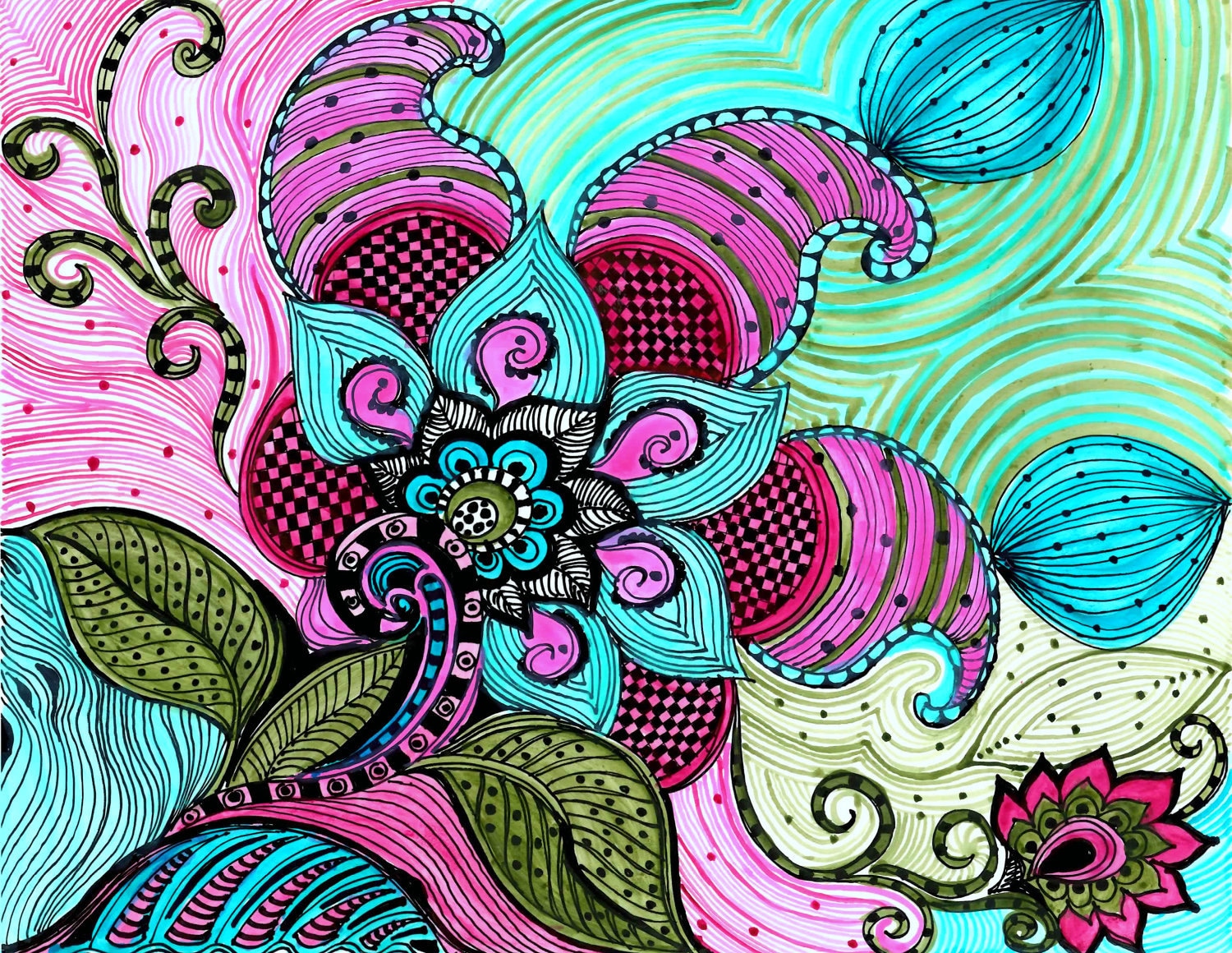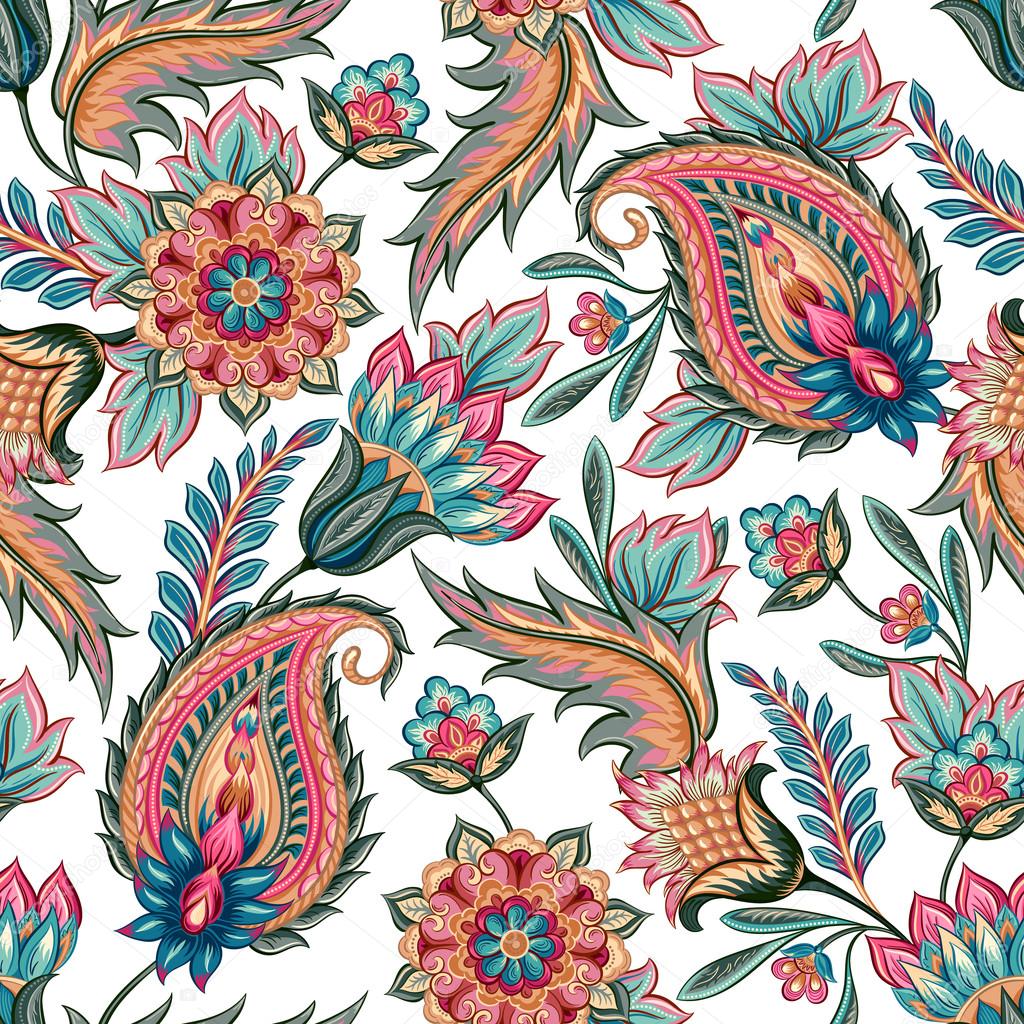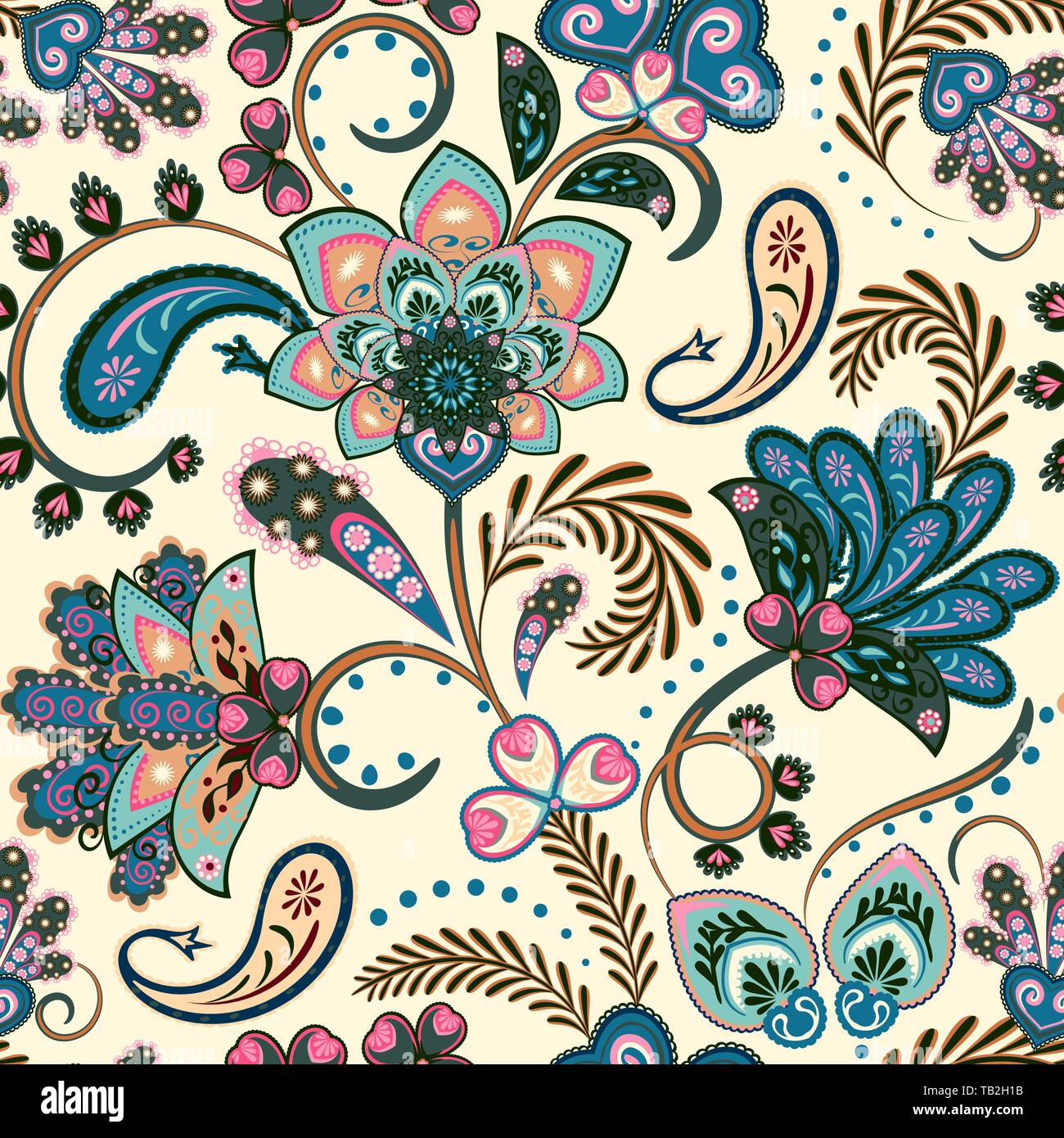Unveiling The Timeless Allure Of Paisley Flowers
The world of design is replete with patterns that transcend time, carrying stories, cultures, and profound meanings within their intricate weaves. Among these, the captivating "paisley flower" stands out—a motif so ubiquitous yet so rich in history and symbolism that it continues to enchant and inspire across continents and generations. Far more than just a decorative element, this distinctive teardrop shape, often adorned with floral elements, embodies a journey through ancient civilizations, spiritual beliefs, and the ever-evolving landscape of fashion and art.
While not a botanical species in itself, the term "paisley flower" beautifully captures the organic, flowing essence of this design, evoking images of exotic blooms and unfolding life. Its presence is felt everywhere, from the delicate silk of a bridal dress to the bold statement of a rock band's album cover, proving its remarkable adaptability and enduring charm. Join us as we delve deep into the origins, spiritual significance, cultural impact, and modern relevance of this truly iconic pattern, exploring why the "paisley flower" remains a beloved and powerful symbol in our collective consciousness.
Table of Contents
- What Exactly Are Paisley Flowers? Defining the Iconic Motif
- A Journey Through Time: The Ancient Roots of Paisley
- The Scottish Connection: How Paisley Got Its Name
- The Spiritual Significance of Paisley Flowers Across Cultures
- Paisley in Bloom: Real Flowers Resembling the Iconic Shape
- From Hippy Chic to High Fashion: The Enduring Appeal of Paisley Flowers
- Finding and Utilizing Paisley Flower Resources
- The Enduring Legacy of Paisley Flowers
What Exactly Are Paisley Flowers? Defining the Iconic Motif
When we speak of "paisley flowers," we are referring to an ornamental textile design characterized by a distinctive curved teardrop shape. This isn't a literal flower that grows in a garden, but rather a stylized motif that often incorporates intricate floral and botanical elements within its form. The pattern itself, known simply as Paisley or the paisley pattern, is one of the most enduring and recognizable designs in the world. It’s a shape that transcends simple geometry, feeling organic and fluid, which is perhaps why it so readily evokes the idea of a "flower."
The core of the paisley pattern is the "boteh" (Persian: بته), a term that refers to this iconic teardrop-like motif. This shape is not arbitrary; it carries deep historical and symbolic weight. Understanding the boteh is key to appreciating the true essence of the "paisley flower" and its journey across cultures and centuries. It’s a design that has been continuously reinterpreted, yet its fundamental form remains instantly identifiable.
The "Boteh": A Symbol of Life and Fertility
The boteh, the fundamental unit of the paisley pattern, has ancient roots, particularly in Persia (modern-day Iran). It is believed to represent a variety of natural elements, each imbued with symbolic meaning. Common interpretations suggest it symbolizes a cypress tree, a date palm, a blooming flower bud, or even a twisted leaf. More profoundly, it is often seen as an ancient Persian symbol of life and fertility. This association with life, growth, and abundance is a recurring theme that underscores the pattern's spiritual significance in various cultures.
The intricate details often found within the boteh – delicate swirls, tiny blossoms, and flowing lines – further reinforce its connection to the natural world and the concept of flourishing life. These internal embellishments transform the simple teardrop into a complex, captivating miniature world, making each "paisley flower" a small work of art in itself. This inherent complexity and organic feel contribute significantly to its enduring appeal and its ability to be seamlessly integrated into diverse artistic and fashion contexts.
A Journey Through Time: The Ancient Roots of Paisley
The journey of the "paisley flower" is a fascinating tale of cultural exchange and artistic evolution. Its origins trace back thousands of years to ancient Persia, where the boteh motif first appeared in various forms, including decorative arts, textiles, and architecture. Early examples can be found in Sassanian and Safavid Persian art, often adorning royal garments and tapestries, signifying status and prosperity. The pattern’s initial use was deeply intertwined with the spiritual and philosophical beliefs of the time, reflecting a reverence for nature and life.
From Persia, the motif traveled eastward, particularly influencing the textile traditions of India, where it was adopted and reinterpreted with local artistic flair. The region of Kashmir, in particular, became a crucial hub for the development and popularization of the pattern, leading to its global recognition. The intricate hand-weaving techniques of Kashmiri artisans elevated the pattern to an art form, creating luxurious shawls that would eventually capture the imagination of the Western world.
From Persia to Kashmir: The Shawl's Grand Entrance
The true global ascendancy of the "paisley flower" began with the exquisite Kashmir shawls. These incredibly fine, hand-woven wool shawls, often adorned with elaborate boteh patterns, were highly prized in the Mughal Empire and later introduced to Europe in the 17th and 18th centuries by the British East India Company. European aristocrats and royalty were captivated by their beauty, warmth, and exotic appeal, making them a coveted luxury item. The demand for these shawls quickly outstripped supply, prompting European manufacturers to attempt to replicate them.
This surge in popularity led to a pivotal moment in the pattern's history. Textile centers across Europe, including Norwich in England and Lyon in France, began producing their own versions of the Kashmir shawls. However, it was the town of Paisley in Scotland that truly excelled at this imitation. Situated just 10 minutes from Glasgow, Paisley was Scotland’s largest town with a rich history, especially in textiles. The weavers of Paisley, Scotland, developed sophisticated Jacquard loom techniques that allowed them to mass-produce these intricate patterns more efficiently and affordably than their Kashmiri counterparts. It was this remarkable success in replication that ultimately lent the town's name to the pattern itself. Thus, the "paisley flower" as we know it today, though Persian in origin, became inextricably linked with this Scottish town.
The Scottish Connection: How Paisley Got Its Name
The story of how a Persian motif came to bear the name of a Scottish town is a testament to the power of industrial innovation and global trade. As mentioned, the town of Paisley, nestled amidst rolling countryside in Scotland, became a powerhouse of textile manufacturing in the 19th century. Its weavers were renowned for their skill and their ability to produce high-quality imitations of the expensive Kashmir shawls that were so fashionable among European elites.
The demand for these shawls was immense, and the Scottish manufacturers, particularly those in Paisley, perfected the art of creating them on mechanical looms, making them accessible to a wider market. The intricate, teardrop-shaped pattern became synonymous with the town's output. Over time, the pattern itself simply became known as "Paisley." This transformation from a descriptive term of origin (Kashmiri shawl with boteh pattern) to the name of the pattern itself highlights the town's significant role in popularizing and democratizing this ancient design. It's a fascinating example of how a geographical location can lend its name to a globally recognized artistic motif, solidifying its place in the lexicon of design history.
The Spiritual Significance of Paisley Flowers Across Cultures
Beyond its aesthetic appeal and historical journey, the "paisley flower" holds significant spiritual meaning in several cultures, underscoring its deep roots in human belief systems. This profound symbolism is one of the key reasons for its enduring presence and reverence, elevating it beyond mere decoration to a sacred emblem.
Hinduism: The Goddess of Fertility
In Hinduism, the paisley pattern is particularly revered. It is often associated with the goddess of fertility, Mata Devi. This connection reinforces the pattern's ancient symbolism of life, growth, and abundance. As such, the "paisley flower" is commonly used in bridal dresses and traditional Indian textiles, symbolizing blessings for fertility, prosperity, and a fruitful union. Its presence in such significant garments and ceremonies speaks to its deep cultural integration and the belief in its auspicious properties. The intricate patterns are not just beautiful; they are imbued with prayers and hopes for a prosperous future.
Buddhism: The Wheel of Life
In Buddhism, paisley is seen as a sacred symbol, often interpreted as representing the Buddhist Wheel of Life, or Dharmachakra. The Wheel of Life symbolizes the cycle of birth, death, and rebirth (samsara), and the path to enlightenment. The flowing, continuous nature of the paisley pattern, with its endless curves and interconnected elements, can be seen to reflect this cyclical journey. The intricate details within each "paisley flower" can also represent the complexities and interconnectedness of existence. This spiritual interpretation gives the pattern a meditative quality, making it a powerful symbol for contemplation and spiritual journey in Buddhist art and textiles.
These spiritual interpretations highlight how the "paisley flower" is not just a pattern but a carrier of profound cultural narratives and beliefs. Its ability to resonate with such deep spiritual concepts across diverse traditions is a testament to its universal appeal and timeless nature.
Paisley in Bloom: Real Flowers Resembling the Iconic Shape
While the "paisley flower" is not a specific botanical species, its organic, flowing form often leads people to associate it with actual flora. Interestingly, many real flowers exhibit shapes and curves that strikingly resemble the iconic paisley motif. This natural resemblance further cements the pattern's connection to the beauty and fluidity of the natural world.
For instance, certain orchids, with their elegant, elongated petals and often asymmetrical forms, can evoke the graceful curve of a paisley. Calla lilies, known for their distinctive trumpet-like spathe that wraps around a central spadix, also share a similar elegant, curved silhouette. The vibrant and exotic Bird of Paradise flower, with its unique, boat-shaped bracts and bright, pointed petals, also possesses a dynamic, flowing form that mirrors the essence of the "paisley flower." These botanical parallels underscore the pattern's inherent naturalism and its ability to capture the essence of organic growth and beauty. It’s a testament to how art often imitates life, drawing inspiration from the most captivating forms found in nature.
From Hippy Chic to High Fashion: The Enduring Appeal of Paisley Flowers
The journey of the "paisley flower" from its ancient Persian origins to its status as a global fashion and cultural phenomenon is truly remarkable. After its initial popularity in European aristocratic circles, the pattern experienced various resurgences throughout history, each time reinventing itself and appealing to new generations.
One of its most iconic transformations occurred in the 1960s and 70s, when paisley became synonymous with the counter-culture and "hippy chic" movement. Its intricate, psychedelic swirls perfectly complemented the era's free-spirited ethos, appearing on everything from bandanas and bell-bottoms to album covers and guitar straps. The use of paisley by bands like The Beatles, particularly during their psychedelic phase, cemented its place in popular culture and music history. This era showcased the pattern's versatility, proving it could be both elegant and rebellious, traditional and avant-garde.
Today, the "paisley flower" remains one of the most endearing patterns of all time, seen on furniture, home decor, and fashion runways season after season. Its timeless appeal lies in its ability to adapt to different styles and trends, from bohemian and vintage to sophisticated and modern. Fashion designers continually reinterpret the motif, proving its enduring relevance and versatility. Whether it's a subtle print on a silk scarf or a bold statement on a tailored suit, paisley continues to captivate and inspire, demonstrating its unique position as a pattern that transcends fleeting trends.
Paisley's Presence in Modern Design and Art
Beyond clothing, the "paisley flower" has found a consistent home in various facets of modern design and art. Its intricate beauty makes it a favorite for interior decorators, appearing on upholstery, wallpapers, curtains, and rugs, adding a touch of exotic elegance or bohemian charm to any space. In graphic design, the motif is frequently used for branding, logos, and illustrative work, lending a sense of heritage, complexity, and artistic flair.
The digital age has further broadened its reach, with a vast array of "paisley flower" vectors, stock photos, and PSD files readily available for designers and artists. This accessibility ensures that the pattern continues to be reimagined and incorporated into contemporary projects, from digital art to product packaging. The enduring popularity of paisley in these diverse fields underscores its adaptability and its timeless aesthetic appeal, proving that a pattern born centuries ago can still feel fresh and relevant in the 21st century.
Finding and Utilizing Paisley Flower Resources
For designers, artists, or anyone simply captivated by the beauty of the "paisley flower," a wealth of resources is available. The digital landscape offers unparalleled access to authentic paisley floral stock photos, images, vectors, and PSD files for various projects and campaigns. Whether you're looking for inspiration, design elements, or high-quality visuals, the options are extensive.
Major stock photo agencies like Getty Images and iStock offer vast collections, providing "less searching, more finding" for professional-grade assets. For instance, you can browse over 61,600+ paisley flower stock photos and images, or start a new search to explore even more options. Many platforms also offer free graphic resources for paisley flowers vectors, stock photos, and PSD files, often available for commercial use. It's possible to download and use over 200,000+ paisley flowers stock photos for free from various online repositories. For unique or custom pieces, exploring handmade items from artificial flowers shops or craft marketplaces can yield beautiful results, allowing you to find everything from intricate textile designs to bespoke decorative elements featuring the "paisley flower" motif.
It's important to note that while the term "Paisley" also refers to the Scottish town, this article focuses on the pattern. If you are looking for flower delivery in Paisley, Scotland, that's a different service altogether, aimed at sending fresh, seasonal bouquets to doorsteps in that specific geographic location. Our focus here remains on the rich, ornamental design that bears the town's name.
The Enduring Legacy of Paisley Flowers
The "paisley flower" has proven itself to be far more than a fleeting trend; it is a pattern with an extraordinary legacy. Its journey from ancient Persian symbol of life and fertility, through the intricate workshops of Kashmir, to the industrial looms of Scotland, and finally into the global consciousness of fashion and art, is a testament to its universal appeal. It embodies a rich tapestry of history, spirituality, and cultural exchange, making it one of the most enduring and beloved patterns of all time.
Its ability to transcend geographical boundaries and cultural contexts, adapting to new interpretations while retaining its core identity, is truly remarkable. From symbolizing goddesses of fertility in Hinduism to representing the Buddhist Wheel of Life, the "paisley flower" carries profound meanings that resonate deeply with human experience. Its presence in both ancient artifacts and contemporary designs highlights its timeless beauty and adaptability. As long as there is an appreciation for intricate design, rich history, and profound symbolism, the "paisley flower" will continue to bloom in the world of art, fashion, and culture.
Conclusion
We've embarked on a fascinating journey through the intricate world of the "paisley flower," uncovering its ancient Persian roots, its spiritual significance across Hinduism and Buddhism, and its remarkable evolution through the textile hubs of Kashmir and Scotland. We've seen how this curved teardrop motif, initially a symbol of life and fertility, transformed into a global fashion icon, influencing everything from hippy chic to high-end couture. Its enduring presence in design, art, and even in the subtle resemblances found in real flowers, speaks volumes about its timeless allure and universal appeal.
The "paisley flower" is a powerful reminder of how art can transcend time and culture, carrying stories and meanings that continue to inspire and connect us. Its rich history and profound symbolism make it more than just a pattern; it's a piece of living heritage that continues to evolve. We hope this exploration has deepened your appreciation for this magnificent motif. What are your favorite uses of the "paisley flower" in design or fashion? Share your thoughts in the comments below, or explore other articles on our site to discover more about the fascinating world of patterns and their stories!

FLOWER paisley fine art PRINT-pink blue green flowers ink and

Seamless Paisley Pattern Stock Vector Image by ©JalloM #83111830

Paisley Flower Design